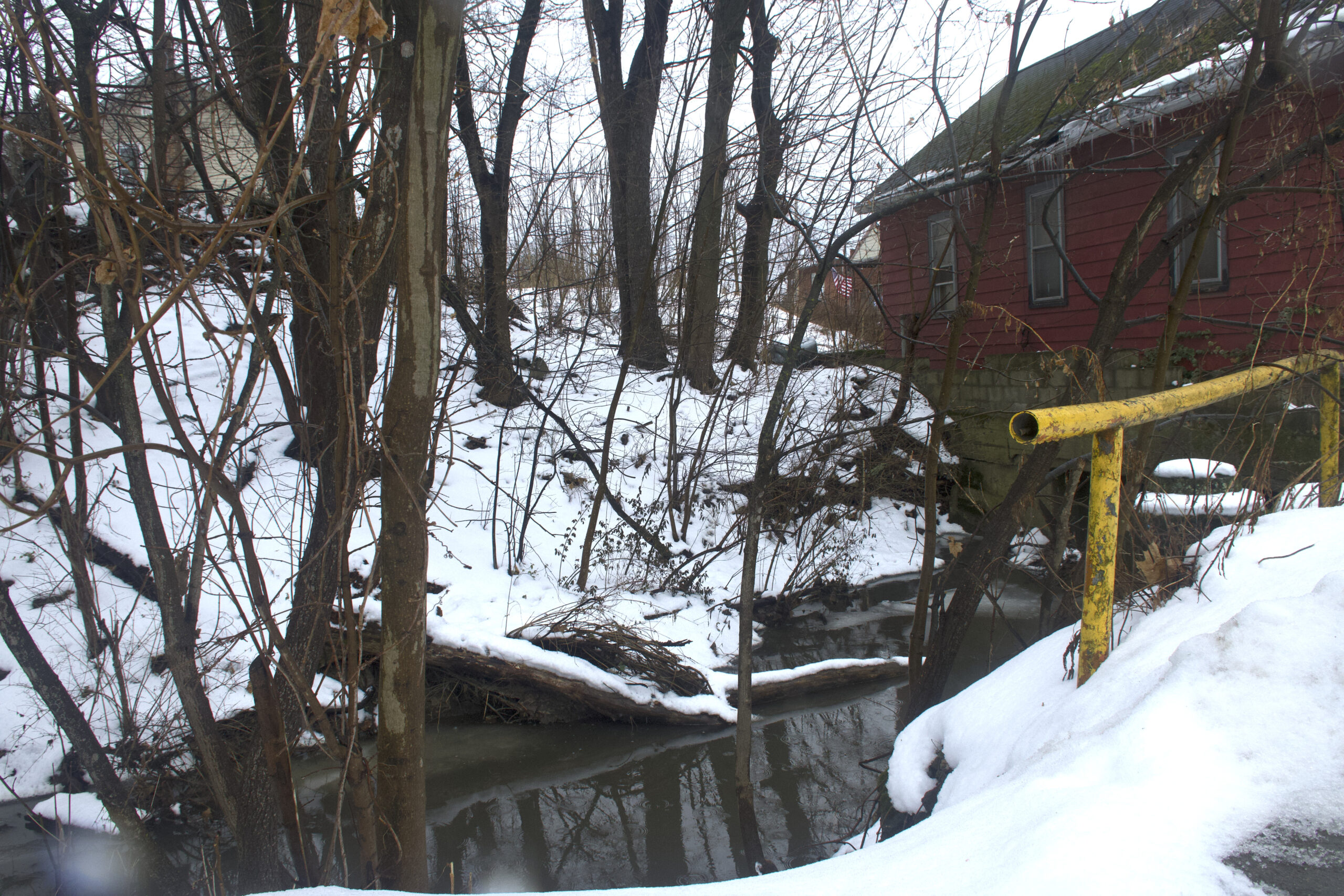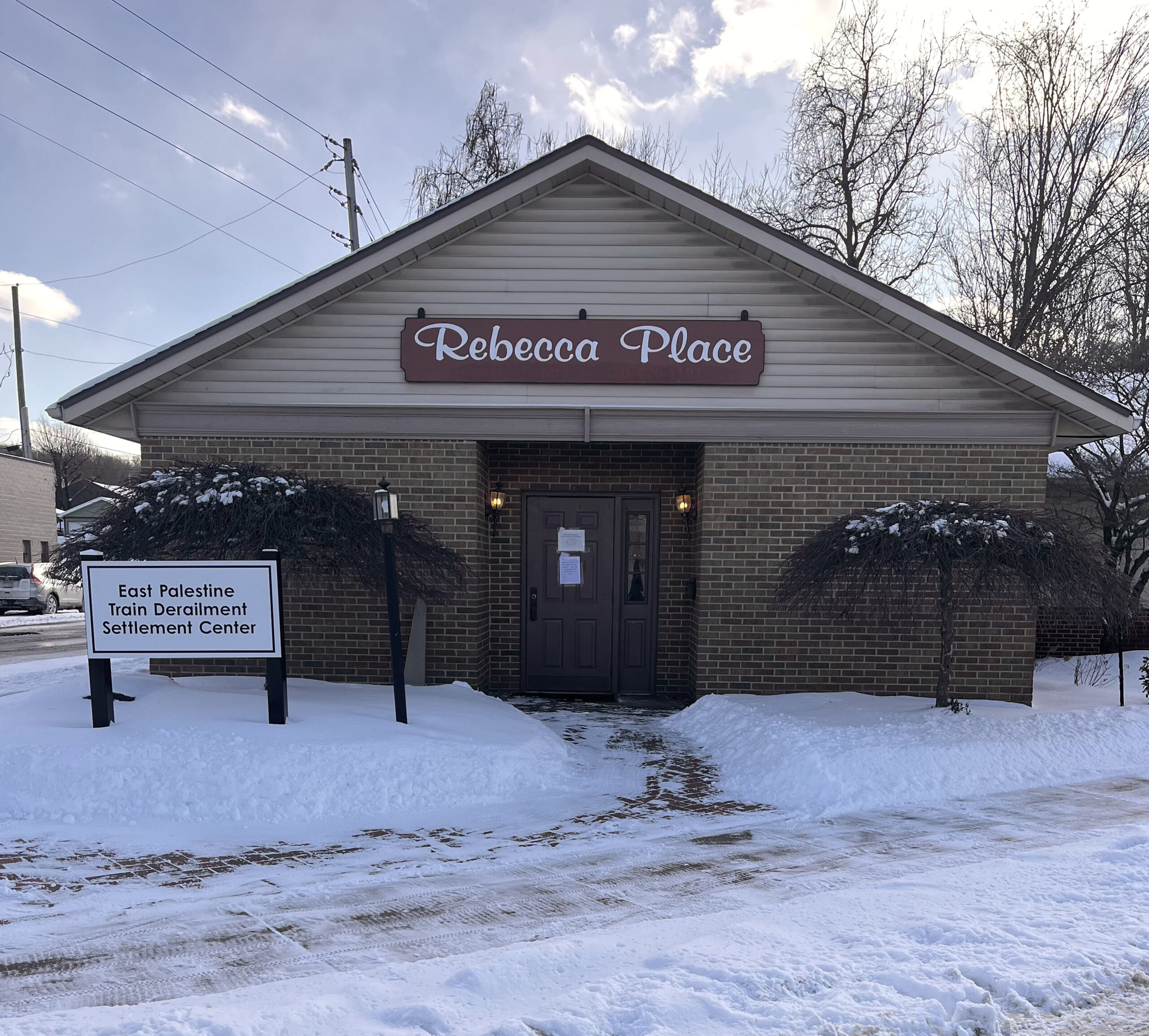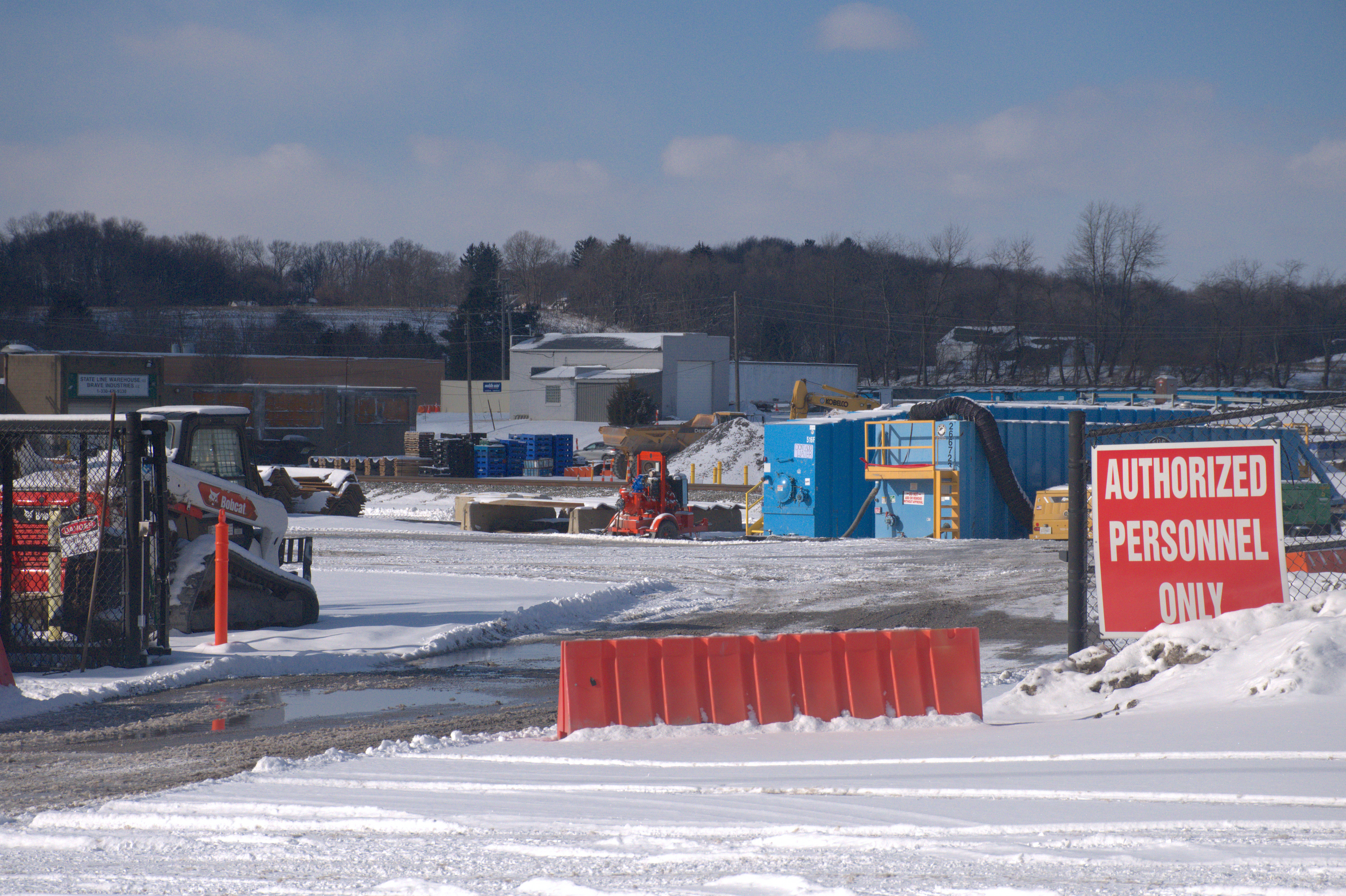EAST PALESTINE, Ohio — Few physical signs remain of the devastating train derailment that blanketed East Palestine in toxic fumes two years ago. But under the surface, the wounds remain fresh.
Norfolk Southern, under the supervision of the U.S. Environmental Protection Agency, has undertaken a massive cleanup operation of the derailment site. The railroad expects to spend more than $1 billion on the cleanup and on improving its safety practices in response to the accident.
EPA said the cleanup, while still ongoing, is mostly complete. And the railroad has reached a $600 million class-action settlement offering compensation to thousands of residents affected by the accident.
Still, East Palestine residents complain of ongoing symptoms that they attribute to chemical exposure, and questions remain regarding the long-term health consequences.
The February 2023 derailment of a Norfolk Southern train spilled thousands of gallons of vinyl chloride and butyl acrylate — both toxic, flammable chemicals — and released a plume of toxic smoke into the atmosphere. Chemicals seeped into nearby waterways, killing tens of thousands of fish, according to state officials.
Linda Murphy, who lives on the rural outskirts of East Palestine, remembers standing at a creek by her property after the derailment and seeing “dead fish everywhere.” Murphy recalled her eyes and throat began to burn from the chemical fumes. “It felt like you were being suffocated.”
As of December, railroad contractors had removed nearly 220,000 tons of contaminated soil and more than 74 million gallons of polluted surface water from East Palestine.
No contaminants associated with the derailment have been detected in the public drinking water supply, and ongoing testing has shown “no indication of risk,” according to Ohio environmental officials.
The state EPA also has said neither the air nor soil quality in East Palestine poses a threat to residents, citing the results of continued environmental monitoring by railroad and government officials.
But the village is bitterly divided over the legacy of the 2023 train derailment. Some residents remain distrustful of the railroad and government officials, and fear the town is still at risk. Others just want to move on.
Vice President JD Vance, Ohio’s two U.S. senators and Gov. Mike DeWine may hear those messages Monday when they visit East Palestine to commemorate the second anniversary of the disaster.
Communication missteps in the aftermath of the derailment have contributed to a sense of skepticism among residents.
In the hours after the crash, local police and fire officials gave residents vague, sometimes contradictory, evacuation instructions.
“They were not told how far to go. They were not told for how long,” said Erin Haynes, an environmental health scientist at the University of Kentucky who is researching the long-term health effects of the derailment. “The return after the evacuation may have been too soon.”
East Palestine officials and first responders declined to be interviewed for this story.
Missteps continued into the cleanup. Norfolk Southern began removing the sediment from two heavily polluted creeks last March, only for EPA to halt the operation for a little over three weeks while the railroad, at the agency’s direction, evaluated “how to more effectively contain and recover” contaminants.
The cleanup effort has created issues of its own. When crews discovered hundreds of dead fish in one of the creeks last April, EPA determined they had died after being sucked into pumps set up as part of the cleanup.

Meanwhile, in late 2023, both EPA and Norfolk Southern touted the completion of excavation work in East Palestine. But in October 2024, EPA said it had identified 14 “small areas” where the soil remained contaminated above cleanup goals and required additional remediation.
“They tell us multiple times it’s cleaned up,” Murphy said in reference to vinyl chloride. “It’s cleaned up, but they keep finding it.”
EPA officials acknowledged the devices used to measure air contamination in the immediate aftermath of the derailment were not sensitive enough to reliably detect indoor levels of butyl acrylate — one of the two chemicals at the center of the disaster — below certain thresholds. Butyl acrylate is known to cause eye irritation, rashes and respiratory symptoms, according to the National Institute for Occupational Safety and Health.
EPA’s most recent testing data show in 2024 alone, the agency ran more than 8,700 tests on soil samples collected near the derailment site and another 670 tests on water samples.
The results of nearly 85% of EPA’s soil testing and 97% of its water testing record chemicals at levels below the agency’s reporting limits. However, in those cases, the data do not record exactly how much of an individual chemical EPA found, making it impossible to identify which — if any — contaminants were still present in small quantities.
In East Palestine, this has raised concerns about the cumulative effect of exposure to low levels of a mixture of chemicals.
“It wouldn’t surprise me that some people would be sensitive to the exposure to those low-level odors, and that’s one of the reasons that we included 20 years of health monitoring in our consent decree,” said Mark Durno, a supervisory engineer at EPA and the agency’s emergency response coordinator in East Palestine. “Because we know that residents were exposed to low-level chemicals.”
Under a proposed federal consent decree reached in May 2024, Norfolk Southern agreed to pay $25 million to provide medical exams and mental health services to the community for at least 15 years. The agreement, which awaits final approval by a federal judge, also requires the railroad to continue monitoring groundwater, surface water and private wells for 10 years.
A Norfolk Southern-funded water filtration system was also installed at the village drinking water plant last June, and state environmental officials continue to test East Palestine’s public drinking water.
For some residents, it’s little comfort. When Haynes, the University of Kentucky researcher, surveyed East Palestine residents last summer, she found that nearly half of respondents were still relying on bottled water as their primary drinking source. Some also reported lingering odors that they believed were related to the derailment, and some participants still had not permanently returned home.
Murphy, whose property sits about two miles from the derailment site, said she still smells chemicals on her property after two years. “Home was never home again” after the derailment, Murphy said. “It’s [percolating] up out of the ground.”
Meanwhile, half of the participants in Haynes’ survey said they still experience symptoms — including respiratory issues and headaches — that they blame on the 2023 accident. Half also said they continue to experience elevated stress levels and roughly 30% reported symptoms of post-traumatic stress.
East Palestine resident Jess Conard said the derailment has “almost thrown me into what feels like a grieving process.’’ Fears of lingering contamination, and the potential for future health problems, “will always be in the back of my mind,” she said.
Kat Smith, who runs a shop in downtown East Palestine, is trying to move on from the derailment but harbors concerns about the immediate and long-term health consequences.
“I think it would be foolish to think that there weren’t some immediate health things,” said Smith, who said she was diagnosed with “chemical bronchitis” in the aftermath of the derailment. “We don’t know what the future holds.”
The potential health problems associated with the derailment have also put vinyl chloride, which has been linked to a wide range of illnesses, under a microscope.
The National Cancer Institute considers vinyl chloride a “cancer-causing substance.” Exposure to the chemical is a presumed cause of neurological symptoms and a suspected cause of immunological and developmental effects, according to the Agency for Toxic Substances and Disease Registry.
Concerns about the public health hazard posed by vinyl chloride also led EPA to launch a risk evaluation in December of the chemical, which is used to make PVC pipes and other products, to determine whether it “presents an unreasonable risk to health or the environment” — and whether the EPA should impose restrictions on the chemical. This, however, will take upward of three years to complete.
Tensions in the town have also arisen around the $600 million class-action settlement offered by Norfolk Southern to residents within a 20-mile radius of the crash site. A federal judge approved the settlement last September, but a handful of residents filed an appeal that has so far held up settlement payments.
Under the current deal, residents would receive lump-sum payments of up to $70,000, with specific amounts determined primarily by proximity to the crash site and any property damage.
Separately, people living within 10 miles of the derailment could opt into a personal injury payment of up to $25,000 for medical issues arising from the disaster. Accepting the payment, however, bars residents from suing Norfolk Southern for compensation if they develop derailment-related illnesses in the future.

Norfolk Southern last week reached a separate settlement agreement with the Village of East Palestine, agreeing to pay $22 million to resolve all claims by the village arising from the 2023 derailment. The deal also canceled a plan for Norfolk Southern to build a safety training center in the town, according to a town news release.
In a statement, a Norfolk Southern spokesperson said the railroad has committed more than $115 million to support the community, including initiatives and programs designed to address community health, economic development and housing, as well as direct assistance to local residents.
But the railroad’s attempts to make amends with the town following the accident have drawn criticism. Seeing the Norfolk Southern logo in the town is “re-traumatizing,” Conard said. True restitution would be paying for medical treatment or permanent relocation for those impacted by the accident, she said, but “none of that has been part of their deliverables.”
Norfolk Southern did offer a temporary relocation program for residents during the cleanup operation, though this program came to an end last February.
Conard is one of a number of East Palestine residents pushing for the federal government to declare a state of emergency for the town — a designation that would expand the community’s access to federal aid. Federal officials have so far declined to issue such a declaration, despite repeated requests from residents and officials.
“That could help us relocate. That could help us account for the damages that have been done to our property and to our person,” said Conard, who has turned to environmental advocacy since the derailment. “And yet, in times of need, we don’t implement that. It was absurd.”
Conard, speaking on the morning of President Donald Trump’s inauguration, added that former Ohio Senator and now Vice President JD Vance “has blamed Biden for not taking care of this community. Now he has an opportunity. The emergency declaration request that was sent to Biden by (Ohio) Gov. DeWine still exists. It is still valid. It is still an opportunity for JD Vance.


You must be logged in to post a comment.